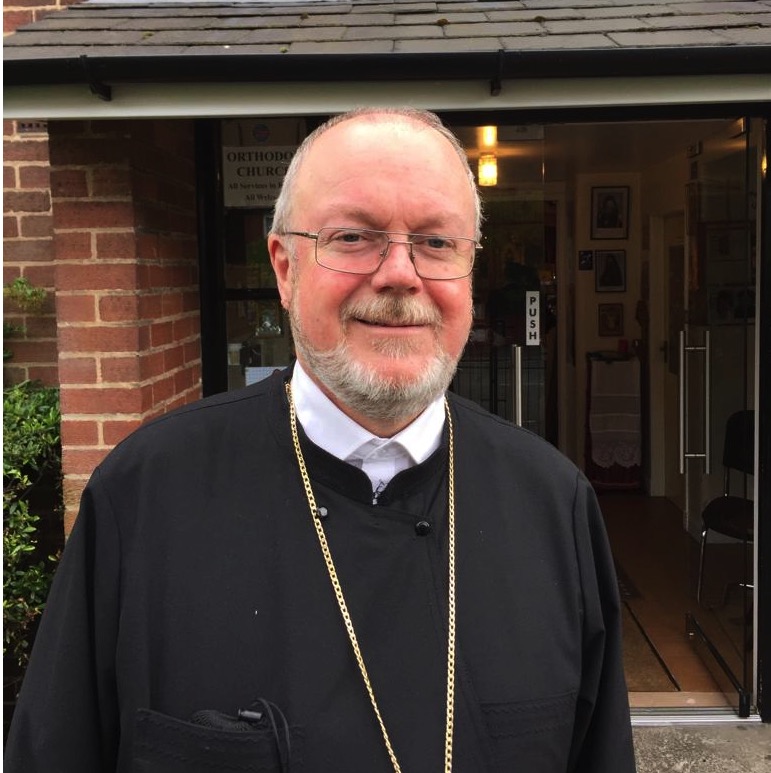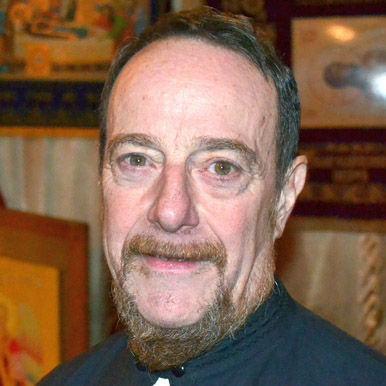Children, each person that the Church declares a saint who has lived a holy life has different gifts—different abilities. Consider the life of one twentieth century saint whom we remember today. His name is St John Maximovitch, Bishop of Shanghai, then Archbishop of the Russian Orthodox Church Outside of Russian for Western Europe and then Archbishop of San Francisco. So, he served in Asia, in Europe and in North America.
St John was born in 1896 in Kharkov, now the second largest city in the Ukraine. During the civil war that followed the Russian Revolution in 1917, Mikhail, as he was then known from his baptism, fled with his parents to Belgrade where he completed his theological studies. In 1926 he was tonsured as a monk, named after St John of Tobolsk, and later that year ordained a priest. He then faced many unexpected and different challenges to which he had to adapt. These challenges helped him to grow as a person and as an Orthodox Christian. It is possible, but quite unlikely that any of us are going to be declared saints by the Orthodox Church. However, like St John we will face many challenges in our lives. Learning about his life can help us meet those challenges in our own lives.
In 1929 St John was appointed as a teacher at the Serbian Orthodox Seminary in Bitola. According to The Synaxarion of the Lives of the Saints of the Orthodox Church for the 19th of June, the date in the Old Calendar on which he died in 1966, St John’s approach to pastoral care shook up the students a great deal. Each night he would go around to all the dormitories, making sure everything was in order. Then “giving only an hour or two to sleep … he would spend the night in prayer, either seated or [lying face downwards] before the icons.” Not surprisingly, as The Synaxarion states, “he greatly influenced the students with his ascetic life and his [pastoral] care.” So, that was the first challenge to the young monk—to teach and to care for his students. His response was to study, to fast and to pray. That’s a good response to almost any challenge we face in our lives—to study and reflect before taking action, to fast and to pray.
In 1934 he was ordained a bishop in the Russian Orthodox Church Outside Russia and assigned to Shanghai. This was not a situation that he sought; and, in fact, he had many reservations about this situation. You might think, as I did initially, “OK, but how can Shanghai in 1934 be relevant to me today? What did St John do?” Well, I read again from The Synaxarion: “He began by bringing together the Orthodox of various nationalities, who had been divided by jurisdictional disputes; and [he] organised help for the poorest.” We could use him now here in Manchester and throughout the Orthodox world. Jurisdictional jealousies are one of the worst faults of the Orthodox Church. Before we seek to draw all other Christians to the depth and breadth of the apostolic Orthodox faith, we would do well to seek repentance and reconciliation among our Orthodox brethren.
In terms of serving the poor, St John “roamed the streets to gather sick children and orphans, both Russian and Chinese.” He began an orphanage with eight children; and by 1949 when the Communists took over China and he “had given shelter to 3,500 children.” At the same time, he continued his ascetic life style; and he always celebrated the Divine Liturgy barefoot “to the great displeasure” of some members of his congregation.
During this period from 1934 to 1949 St John was achieving four quite different objectives. He was bringing Orthodox Christians of different nationalities together. He was serving the poor, especially children. He was continuing his ascetic life style, eating and sleeping very little; and he was celebrating the Divine Liturgy every day. Now, all of those different objectives remain possible for every Orthodox Christian—cleric or lay person—anywhere in the world today: to bring together different nationalities in friendship and respect and worship, to serve the poor, to be ascetic, to celebrate or attend the Divine Liturgy as often as possible.
Between 1949 and 1951, as the communists took over China, St John continued as the leader of some 5,000 Russian refugees in China. He cared for them and then arranged for most of them to receive immigration papers to go to the United States and Australia. Then in 1951 St John was appointed Archbishop of the Russian Orthodox Church Outside Russia for Western Europe. He served in Europe from Paris and Brussels for 12 years, caring for the Russian immigrants in Europe and seeking, as the Synaxarion phrases it, “the restoration of Orthodoxy in the West.” “One day a [Roman] Catholic priest, wanting to assure his congregation that holiness was not a thing of the past, cried out in his sermon: ‘See a saint is walking the streets of Paris today: John the Barefoot!’”
Clearly, St John had become an outstanding leader both as an Orthodox priest and as a servant of all people. Further challenges awaited. “In 1963, he was sent urgently to San Francisco [as archbishop] to restore peace to the Russian community there, which was divided over the building of the Cathedral.” Unfortunately, Orthodox Christians, like others, both Christians and non-Christians, sometimes argue violently about buildings and about how best to live their lives.
In his life, St John Maximovitch has been linked to many miracles. Let me tell you about a small miracle that happened to friends of mine when they attended the glorification of St John at the Cathedral in San Francisco in 1994. Khouria Sylvia and I were in Kansas City at that time serving as volunteers at Reconciliation Ministries, led by then Reader Paisius Altschul and his wife Matushka Michaila They went together to the Cathedral in San Francisco for the ceremony glorifying St John as a saint. I asked Reader Paisius, now Hieromonk Alexii, head of a small Serbian Orthodox monastery in Missouri, to tell me about that ceremony. [See their website at http://www.archangelmichaelskete.org, especially the six-minute video on the bottom left of the website, with a photo of Hieromonk Alexii].
He wrote: “As a reader, I was led to a different part of the crowded church than Matushka. There was a beautifully newly written icon of St John that many were venerating. When Matushka approached to venerate, the person pulled it away. She was hurt.” Matushka is Afro-American.
Hieromonk Alexii continued: “So then Matushka stood in line to venerate his relics. While [she was] waiting a man came up to her and said, ‘Whatever you want him to do, tell him, and he’ll do it.’ She said, ‘OK! Thank you.’ Then a lady standing nearby approached her and asked, ‘Did you understand what he said to you?’ ‘Yes,’ she said, and repeated what he told her. The other lady asked with surprise, ‘Do you speak Russian?’ Matushka said, ‘No!’ Then the other lady said, ‘But he said that in Russian!’ Matushka said, ‘Praise the Lord and crossed herself!’”
Hieromonk Alexii concluded this story that he sent to me a few days ago with the words: “Since then St John has inspired, healed and helped many, both in our mission in Kansas City, and since Matushka went to be with the Lord, at the monastery. Wondrous is God in his saints.” So, here at St Aidan’s in Manchester, at the Holy Virgin Russian Orthodox Cathedral in San Francisco, and in Orthodox churches and homes everywhere, whether we are old or young, let us remember those words about St John spoken in Russian and understood in English by Matushka Michaila: “Whatever you want him to do, tell him, and he’ll do it.”
And so, we ascribe as is justly due all might, majesty, dominion, power and praise to God, Father, Son and Holy Spirit, always now and ever and unto the ages of ages. Amen.

 Archpriest Gregory Hallam
Archpriest Gregory Hallam
 Fr. Emmanuel Kahn
Fr. Emmanuel Kahn